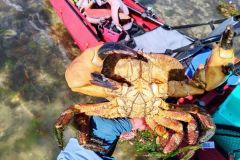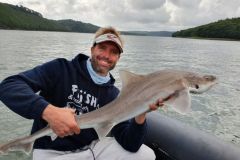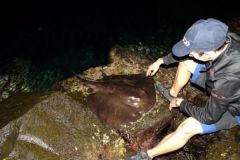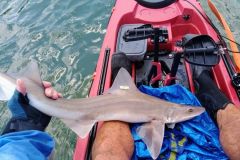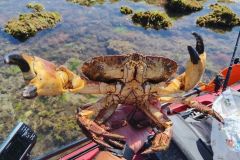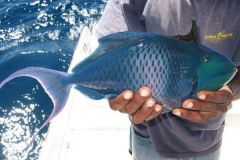Appreciated meetings

Perlon, grey, camard and red, close-up on these "walkers". These fishes are part of those that we meet with pleasure, at least for me. I love to take pictures of them and listen to them growl before releasing them. They are not systematically sought after fish, I will classify them in the category of by-catch.
They bite a little at everything, soft or hard lures, jigs, tenya, madaï, kabura, they are not sectarian fish. There are therefore 4 species present in the roadstead of Brest. Some of them are very well represented, others a little more discreet.
The common gurnard or striped gurnard
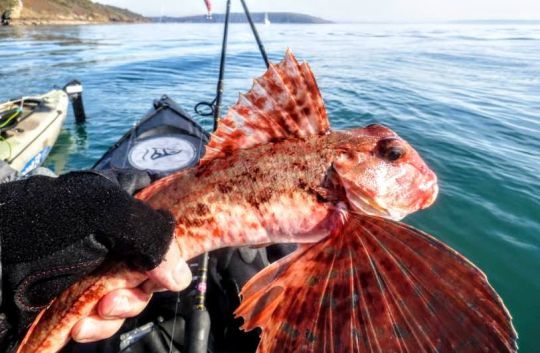
The most discreet is the gurnard (chelidonichthys lestoviza). With a beautiful pinkish to red coat, it has brown spots that remind the coat of the red mullet, a cousin highly prized for the quality of its meat. Its forehead, almost vertical, is more marked than for the other species. It also has sensory organs quite developed at the front of the belly which, in addition to being used to find its food, allow it to really "walk on the bottom of the water".
Like the other gurnards, it is carapaceous and emits a real growl when it is taken out of the water. It is this ability to growl that gave them their name. Since I've been fishing in the Brest harbor, and it's already been a long time, I've only caught two of them.
The perlon gurnard
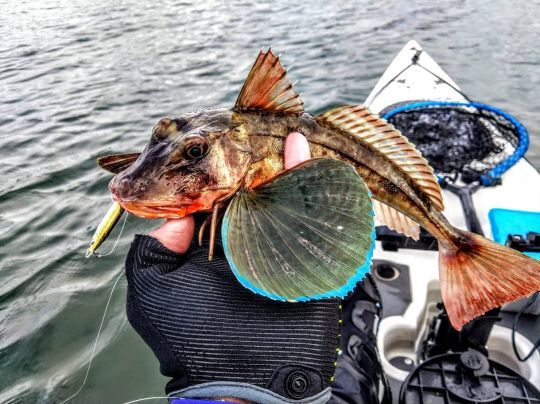
The most common, the perlon gurnard (chelidonichthys lucerna) more simply called galinette, swallow or trigle, just to mention a few of its common names. It can reach 75 cm long. It also has pectoral fin rays transformed into legs, less developed than in the camard, but it also walks on the bottom.
Easily recognizable by its very large pectoral fins, they are used to "glide" through the water, varying in color from beige to yellow with a black spot surrounded by blue. The edge of the pectoral fins is also decorated with more or less intense blue. It is a splendid fish.
The red and grey gurnard
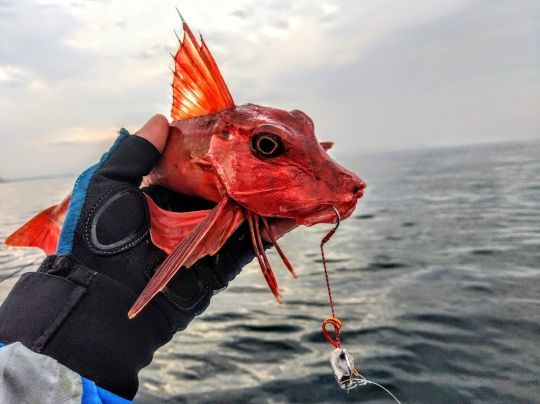
The most recognizable, the red gurnard (aspitrigla cuculus). It is also very present in the harbor, it is also one of the species commercialized with the perlon. It has the same feeding habits as the others, and the same general aspect, the bone plates are perhaps a little more developed. Easily recognizable, it is really all red.
Quite rare in the harbor, the grey gurnard (eutrigla gurnardus) is smaller than the others at adult size, also much less colored, it goes from grey to grey-green, the belly is white, we sometimes find a big dark spot on the dorsal. Like its congeners, it is a walker and a grunter, I spotted it more often on the north coast, in the sandy part of abers.
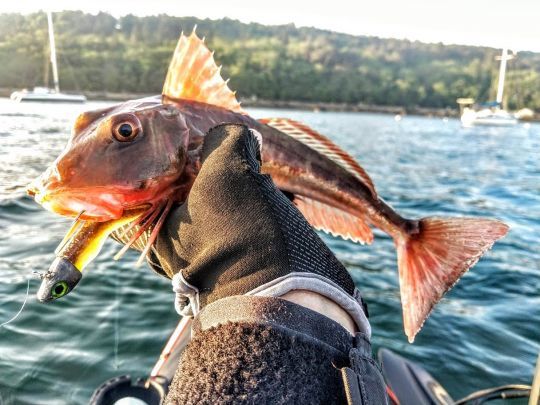
For completeness, there are other species of gurnards that frequent French waters, but they are not present in the Brest bay:
- The dusky gurnard (chelidonichthysobscurus)
- The common cavillone (lepidotrigla cavillone)
- The black grouse (trigla lyra)
- The flying gurnard (dactylopterus volitans)

 /
/ 





